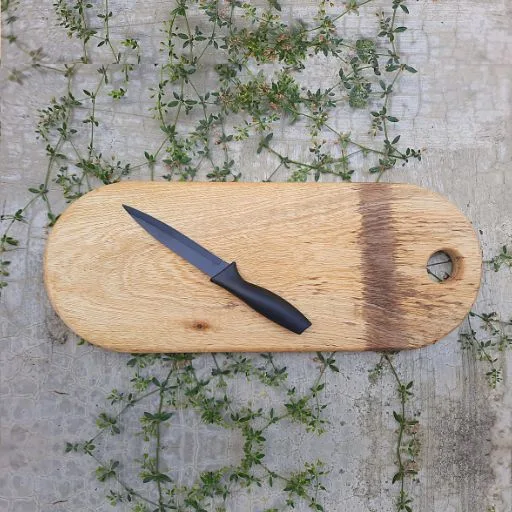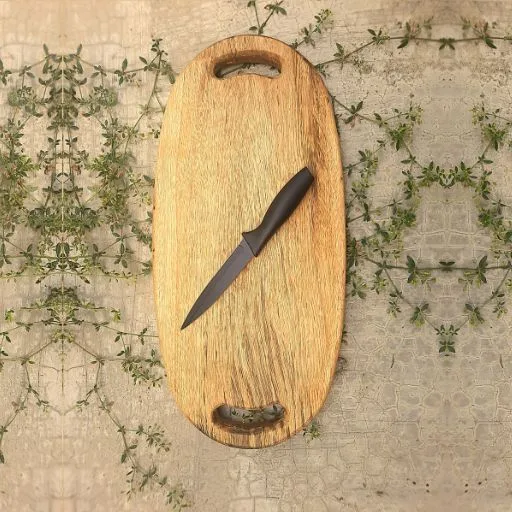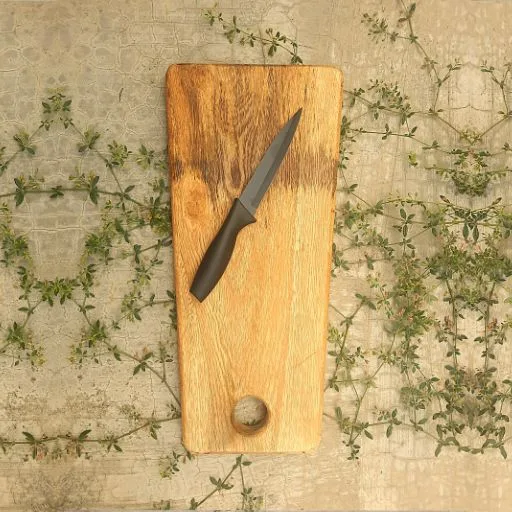Your cart is currently empty!
The Science Behind Stainless: Why Steel Cutting Boards Are Built Different
The recent years have seen a lot of debate in the chopping board industry. The fight between wooden chopping boards, plastic, glass, steel, and bamboo has peaked over the past few years like never before. The plastic cutting boards have been termed as a villain in most cases while the wooden cutting board is trending with a projection of 5.5 billion by the year 2032. While all that looks promising, there is a silent contender taking over the market gradually — the steel cutting board. Resilient, self-healing, hygienic, sustainable, and easy to maintain. Steel cutting boards help manage cross-contamination easily, are dishwasher safe, and are a reliable companion for most homes.
While many home users still swear by their wooden cutting boards, steel cutting boards definitely need to be considered especially if you are looking to cut on cross-contamination, cook meat at home, and are concerned about carrying bacteria like E. coli from one food to another. It definitely does not require a lot of research and science to back the fact that steel cutting boards are durable, hygienic, and have a modern appeal.
What Exactly Is Stainless Steel?
Stainless steel is an alloy containing at least 10.5% of chromium with iron. Chromium resists corrosion and rust. Other elements that are commonly mixed include nickel, molybdenum, and carbon. Stainless steel is essentially iron with added elements to prevent corrosion and rust. Chromium particularly is very reactive to oxygen and reacts to create chromium oxide. So each time there is a scratch on the steel layer, the thin film of chromium oxide immediately heals the metal, preventing rusting and corrosion. Chromium also helps in oxidation resistance apart from creating a self-healing metal surface.
The Chemistry of Rust Resistance
Chromium oxide layer on stainless steel forms on the surface of a cutting board, providing a barrier against corrosion. The layer is self-healing, so when a knife scratches on the surface, chromium oxide layer can regenerate itself, protecting the area where the scratch occurred. The regeneration happens in the presence of water or oxygen. The process is so quick that it occurs in nanoseconds, and the layer is a few microns in thickness, sufficient to prevent corrosion and rust.
The self-healing property of chromium oxide is what makes stainless steel stainless. This is the reason why it is one of the preferred materials for chopping boards, keeping it in its best shape and condition for years without rust, corrosion, or stains.
Compared to porous material like plastic and wood, steel lasts longer, often more than decades, adding value to your purchase. They are sustainable and rarely require any maintenance. Being dishwasher safe also ensures lesser effort in cleaning.
Non-Porous Surface = No Place for Bacteria to Hide
Steel cutting boards are non-porous and have no effect from knife scratches, making it impossible for bacteria to hide in. Plastic boards in particular are prone to knife grooves, creating an environment for bacteria to reside and thrive. Wooden cutting boards are often self-healing and trap bacteria, and the oil in the wood kills bacteria effectively. But steel cutting boards are impossible to create knife grooves on and make it a perfect surface that is antibacterial. Zero porosity means no chance of water retention, possibility of mould or fungal infection, and easy to clean too. You can wash steel boards with boiling water and use chemical cleansers too, which is not possible with wooden cutting boards.
Heat Resistance That Outperforms
Steel is durable and more importantly heat resistant. Literally indestructible, steel boards can bear the high heat. This is a great reason to use them as a trivet in a kitchen or to place hot pots over. Talk about multipurpose uses. Also, since the steel boards are resistant to heat, they can be washed with hot water without worries of warping, bending, or cracking. The high heat tolerance makes it great for use under hot pots, grills, and during searing preparations.
Strength & Scratch Resistance
The tough surface ensures that there are no cuts, scratches, or deep gouges and knife scars. This prevents bacteria from getting into the cracks, which is a common problem in plastic boards and even wooden boards. Steel boards are generally considered safe and hygienic in the long term due to its scratch resistance and strength features.
The Knife Controversy: Is Steel Bad for Blades?
Steel is definitely a bad board when it comes to dulling knives. The only blade that can survive the steel board is a porcelain or stone knife, which is rare and not used by professional or home chefs. Using a steel or iron knife on a steel board is prone to dulling the knife’s edges. But for most home chefs, this is not something to worry about. Sharpening your knife takes less than a few minutes, and most home chefs use a regular knife which is not expensive or rare/professional.
Steel and the Possibility of Slipping and Safety Concerns
Steel has one other small issue, especially when cutting wet food. Steel has a poor grip on the surface, often tending to slip on the surface. If you have to cut meat and if you are not steady with your hands or the food is dense, the chances of slipping and causing accidents are higher on a steel board compared to other boards. Apart from this small issue, and of course the aesthetics, there is nothing you have to worry about in a steel cutting board, and the steel cutting board is definitely a great purchase.
Categories
Recent Posts
- How to Use a Large Wooden Cutting Board for Meal Prep and Entertaining
- The Pros and Cons of Having a Juice Groove in Your Cutting Board
- Messy Counters After Cutting Veggies? Here’s How to Keep It Clean and Easy
- Health Benefits of Using a Teak Wood Chopping Board
- The Ultimate Guide to Care and Maintenance for Teak Wood Chopping Boards: How to Clean, Oil, and Protect Your Wooden Cutting Board for Long-Lasting Use
Best selling products
Single Block Premium Mango Wood Chopping Board With Juice Grooves Large
Original price was: ₹1,999.00.₹949.00Current price is: ₹949.00.Mini Oval Mango Wood Cutting Board with Handle | Premium Single-Block Craftsmanship | Rustic Natural Finish
Original price was: ₹999.00.₹699.00Current price is: ₹699.00.Mango Wood Tray Platter Small : Oval Mango Wood Cutting & Serving Board with Dual Handles | 15″ x 8 “x 1” |Handcrafted Single Wood Block | Natural Rustic Finish
Original price was: ₹999.00.₹749.00Current price is: ₹749.00.Rectangular Mango Wood Cutting Board with Cut-Out Handle | Handcrafted from a Single Block | 8″ x 15″ x 1″ | Small Chopping Board
Original price was: ₹999.00.₹799.00Current price is: ₹799.00.




